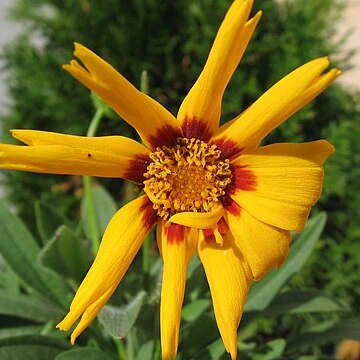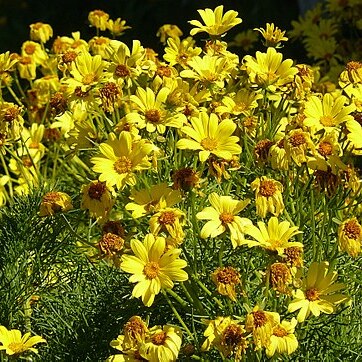Heads radiate, the rays few, often 8, conspicuous, usually neutral, yellow or rarely pink or white, sometimes marked with reddish-brown at base; invol bracts biseriate and dimorphic, all joined at the base, the outer narrower and usually shorter, commonly more herbaceous than the inner; receptacle flat or slightly convex, its bracts thin and flat; disk-fls perfect and fertile; style-branches flattened, with short or elongate, subtruncate to caudate, hairy appendage; achenes flattened parallel to the invol bracts, usually winged, not beaked; pappus of 2 smooth or upwardly barbed, short awns or teeth, or a minute crown, or obsolete; herbs (ours) with opposite or rarely alternate, entire to pinnatifid or ternate or dissected lvs. 100, mainly New World.
Annual or perennial herbs, sometimes somewhat woody. Lvs usually opposite, rarely alternate, simple and entire to dentate or lobed, or 1-3-ternate or pinnate. Capitula pedunculate, solitary or in loose cymes. Involucral bracts in 2-(4) rows; outer row usually foliaceous; inner rows membranous. Receptacle flat or slightly convex; scales present. Outer florets ♀ or sterile, ligulate, usually yellow, sometimes mauve, rose, pink, white or marked with red toward base. Inner florets ☿, tubular. Achenes all similar, orbicular, oblong to linear, compressed; lateral angles usually with entire or dentate wings, sometimes not winged; pappus 0, reduced to a small corona, or of 2 antrorsely barbed or smooth awns.
Achenes flattened; pappus of 2 small tufts of bristles < 1 mm long.


